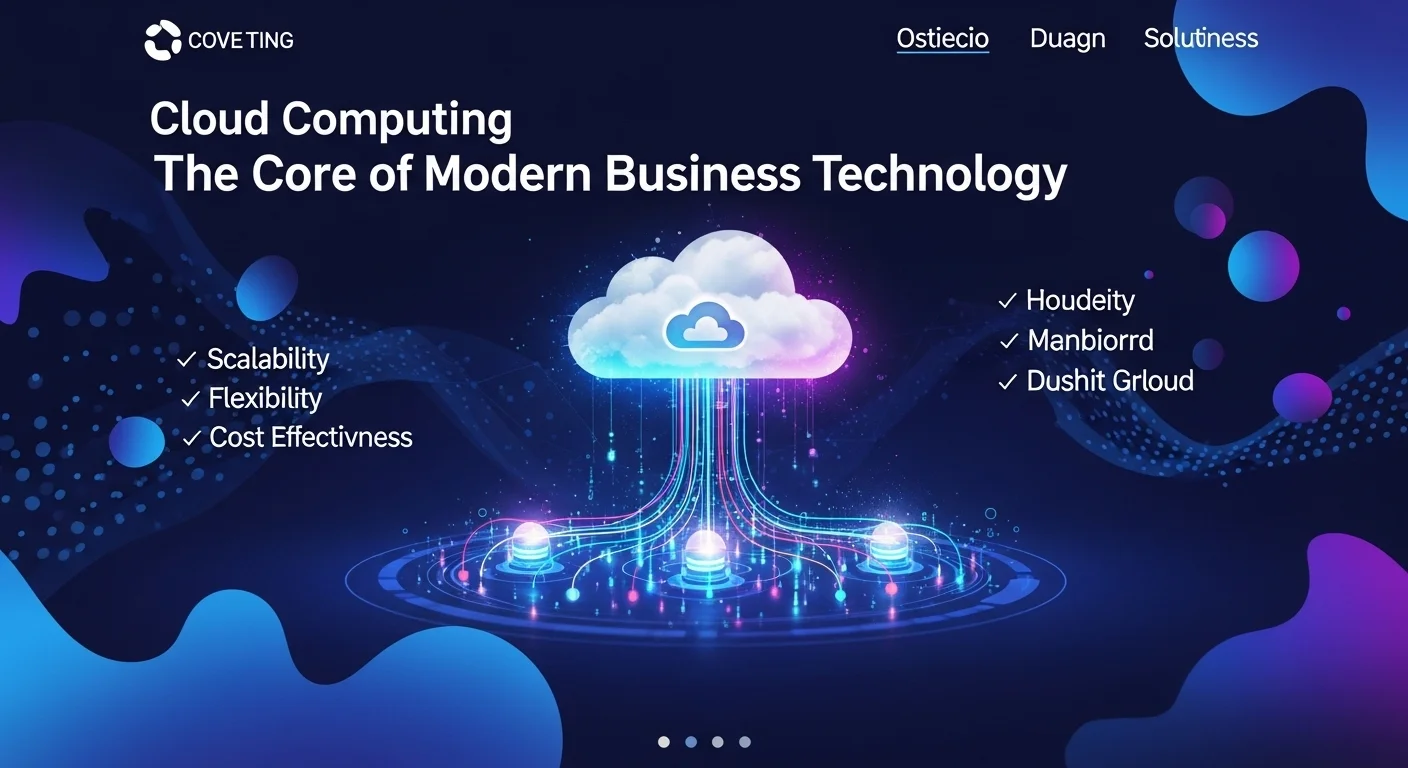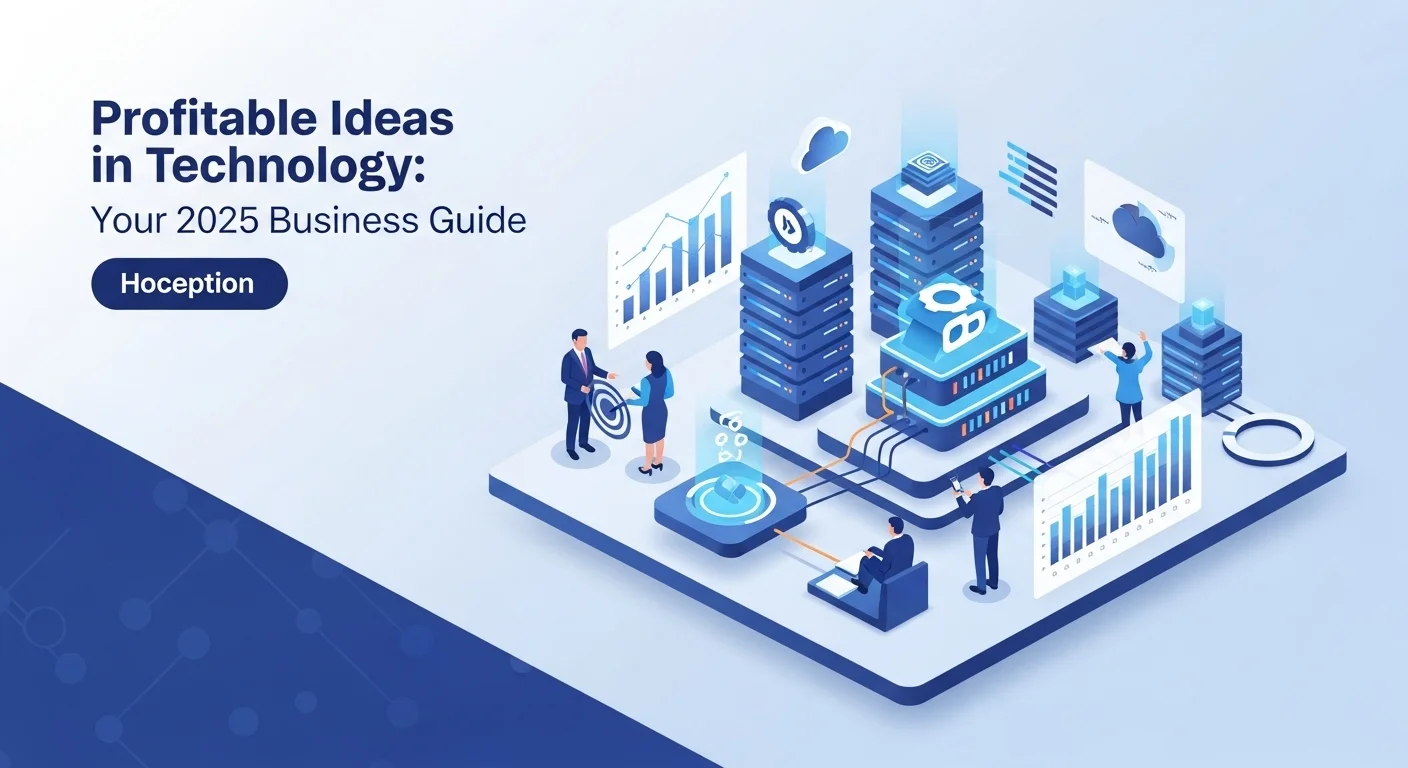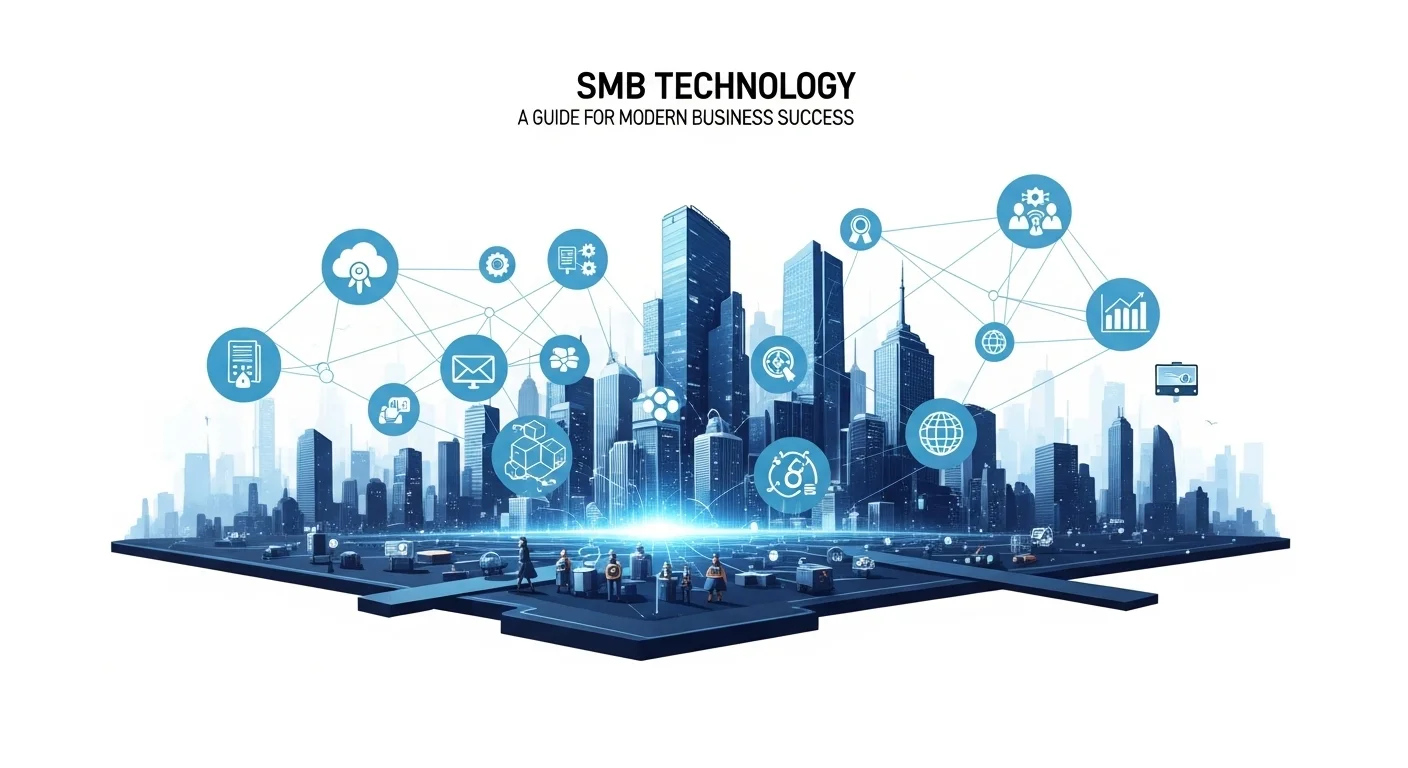Cloud Computing Explained: A Guide to Growing Your Business in the Cloud

Executive Summary
For years, I've seen businesses transform, and the one common thread has been the smart adoption of cloud computing. It's not just a piece of tech; it’s the engine for modern growth. In this guide, I'm going to cut through the jargon and give you a straight-talking tour of the cloud. We'll cover the essential service models—IaaS, PaaS, and SaaS—and I'll explain exactly what they mean for your company's efficiency, security, and ability to innovate. We'll talk about the real benefits, like saving money and gaining incredible flexibility. I'll also share my experience on trickier subjects like migrating your systems without the headaches, the power of a cloud VPS, and how DaaS (Desktop as a Service) is a game-changer for remote teams. Whether you're a tech pro or a business leader, this article will give you the clear insights you need to make the cloud work for you.
Table of Contents
Table of Contents
What is Cloud Computing, Really?
In my early days in IT, everything lived on-site. We had noisy server rooms, and if you needed more power, you had to buy a new physical box, wait for it to arrive, and spend a day setting it up. Today, that world feels ancient. So, what is cloud computing? In the simplest terms, cloud computing is like renting someone else's powerful computer resources over the internet instead of owning your own. Instead of managing physical servers, you can access services like processing power, data storage, and software from a provider like Amazon Web Services (AWS), Microsoft Azure, or Google Cloud. You only pay for what you use, which was a complete game-changer. This shift has made powerful technology accessible to everyone, from a solo developer with a great idea to a massive global corporation. It's the silent engine behind your favorite streaming service, the mobile apps you use daily, and the cutting-edge work happening in AI and the Internet of Things (IoT).
The Building Blocks: IaaS, PaaS, and SaaS
To really get a handle on the cloud, you need to understand its three main service models. Think of them as different levels of service, each giving you a different amount of control.
Infrastructure as a Service (IaaS)
IaaS is the most fundamental level. It's like leasing the raw ingredients of a data center: servers, storage, and networking. You get the ultimate flexibility to build whatever you want. A perfect example is a cloud computing VPS (Virtual Private Server). I remember my first time spinning up a VPS; it was amazing to have a dedicated server environment up and running in minutes, without touching a single piece of hardware. This model is perfect for businesses that want maximum control over their applications and operating systems but don't want the headache of managing the physical infrastructure. You manage the software, and the provider manages the hardware.
Platform as a Service (PaaS)
PaaS is the next level up, designed specifically for developers. It gives you a platform—a complete development and deployment environment in the cloud—without you having to worry about the underlying servers, operating systems, or storage. Your team can just focus on writing code and building great applications. Think of services like Heroku or Google App Engine. They handle all the backend complexity so you can launch your products faster. Investing in cloud computing courses that cover PaaS can seriously accelerate a development team's productivity.
Software as a Service (SaaS)
You're already using SaaS every day. It’s any software you access over the internet on a subscription basis, like Google Workspace, Microsoft 365, or Salesforce. With SaaS, you don't manage anything—not the software, not the servers, not the updates. You just log in and use it. For businesses, this is incredible because it removes the entire burden of software maintenance and offers predictable, low upfront costs. It’s the ultimate 'set it and forget it' model.
A Modern Twist: Desktop as a Service (DaaS)
Beyond the big three, we've seen specialized services emerge. One of the most important today is DaaS in cloud computing, or Desktop as a Service. DaaS providers deliver a full virtual desktop experience to users over the internet. This became a lifeline for companies during the shift to remote work. It allows employees to securely access their work computer from any device, anywhere, while all the data stays safe and centralized in the cloud. It’s a powerful, scalable solution for any business embracing a hybrid workforce.
Why Every Business Is Moving to the Cloud
Adopting the cloud isn't just a trend; it's a core business strategy. The benefits are simply too big to ignore.
- Saves Money: You trade large upfront hardware costs for a predictable monthly operational expense. No more buying servers that will be outdated in a few years.
- Scales Instantly: Need more power for a big product launch? You can scale up in minutes. Traffic died down? Scale back down just as fast. This flexibility is a huge competitive advantage.
- Improves Security: Top cloud providers have teams of world-class security experts. They offer security features and controls that are far more robust than what most companies could build on their own.
- Keeps You Running: With the cloud, disaster recovery is simpler and cheaper. Your data can be backed up across multiple locations, ensuring your business can stay online even if something goes wrong.
Making the Move: A Quick Look at Cloud Migration
For businesses with existing systems, the journey begins with cloud migration in cloud computing. This is the strategic process of moving your applications and data from your on-premise servers to the cloud. It's more than just a simple 'lift and shift'; it requires careful planning to decide what to move and how to move it. I always tell my clients that cloud computing is a journey, not a destination. The migration is just the first step. Proper training, including specialized cloud computing courses, is vital to ensure your team is ready to manage and optimize your new cloud environment from day one.

Your Strategic Guide to Mastering the Cloud
Once you've grasped the basics, the real fun begins. Leveraging the cloud effectively is about making smart, strategic choices—from picking the right provider to planning a seamless migration. In my experience, this is where businesses truly unlock innovation. The idea that cloud computing is a catalyst for growth becomes undeniable when you see its advanced applications in action.
Choosing Your Champion: AWS vs. Azure vs. Google Cloud
The cloud world is largely ruled by three giants. While they all offer similar core services, their strengths appeal to different needs. Think of it this way:
- Amazon Web Services (AWS): The original trailblazer and still the market leader. AWS has the most extensive range of services and the largest community. I often recommend it to startups and companies that want the widest array of tools and deep functionality. Their cloud computing VPS offering, EC2, is incredibly versatile. If you want the most options, AWS is a safe bet.
- Microsoft Azure: The powerhouse for enterprises. If your company already runs on Microsoft products like Windows Server, Office 365, or Active Directory, Azure's integration is seamless. It's my go-to recommendation for businesses looking for a strong hybrid cloud solution. Their DaaS in cloud computing solution, Azure Virtual Desktop, is a market leader for a reason.
- Google Cloud Platform (GCP): The data and analytics expert. Google built its cloud on the same infrastructure that powers its search engine and YouTube. As a result, GCP excels at large-scale data processing, machine learning, and containerization with Kubernetes. For data-driven, cloud-native companies, GCP's performance and specialized tools are often the winning factors.
The Art of Cloud Migration: A Practical Roadmap
A successful cloud migration in cloud computing is a carefully planned project, not a frantic rush. When I consult on a migration, we always start with the '6 R's' to create a clear strategy for every application:
- Rehosting (Lift and Shift): The simplest approach. You move your application to the cloud as-is, like moving a physical server to a cloud computing VPS. It's fast, but you won't get all the cloud benefits.
- Replatforming (Lift and Tinker): You make a few small tweaks during the move to take advantage of cloud features, like switching to a managed database service. A good middle ground.
- Repurchasing (Drop and Shop): You ditch your old application entirely and move to a SaaS product that does the same thing (e.g., switching from an old on-premise CRM to Salesforce).
- Refactoring/Re-architecting: The most intensive approach. You completely rebuild your application to be cloud-native, using things like microservices or serverless functions. It's a big investment but delivers the biggest long-term rewards in performance and scalability.
- Retire: You identify applications you don't need anymore and simply turn them off. It's surprising how much money this can save.
- Retain: Some applications just aren't ready or right for the cloud. You decide to keep them on-premise for now and focus on other priorities.
Choosing the right path requires a deep look at your goals. That's why having a team skilled up through cloud computing courses is essential before you even begin.
How the Cloud Fuels Today's Innovations
The cloud is the launchpad for nearly every major tech trend today.
- Big Data & Analytics: The cloud makes it possible to store and analyze unimaginable amounts of data affordably, turning raw information into priceless business insights.
- Artificial Intelligence (AI) & Machine Learning (ML): The cloud has made AI accessible to all. It provides the massive computing power needed to train complex models, allowing businesses to build smarter products and automate processes.
- Internet of Things (IoT): From smart homes to factory floors, billions of devices are generating data. The cloud provides the backbone to collect, process, and analyze that data in real-time.
- Remote Work & Collaboration: As we've seen, the cloud is what makes remote work possible. SaaS tools keep teams connected, and DaaS in cloud computing ensures everyone has secure access to the tools they need, no matter where they are.
Ultimately, the statement that cloud computing is the bedrock of modern business isn't an overstatement. It’s the platform that gives companies the agility, power, and resilience to compete and win in a digital-first world.

Pro Tips for Long-Term Cloud Success
Getting to the cloud is one thing; thriving there is another. In my years as a strategist, I've seen that success comes from continuous optimization, smart governance, and keeping an eye on the future. The truth is, cloud computing is a living, breathing field. Here are my go-to tips and strategies to help you get the most out of your cloud investment.
Running a Tight Ship: Cloud Management Best Practices
Without proper management, cloud environments can become messy and expensive. A solid governance plan is non-negotiable.
1. Cloud Security (SecOps)
Security is a partnership. Your provider secures the cloud infrastructure, but you are responsible for securing what you put *in* the cloud. Here’s what to focus on:
- Master Your Access: Use Identity and Access Management (IAM) to enforce the 'principle of least privilege.' Only give people and services the exact permissions they need. And please, use multi-factor authentication (MFA) everywhere.
- Encrypt Everything: Protect your data when it's stored (at rest) and when it's moving across the network (in transit). All major providers make this easy.
- Build Virtual Fortresses: Use tools like Virtual Private Clouds (VPCs) and security groups to isolate your resources. Regularly review your firewall rules.
- Monitor for Threats: Use cloud-native tools to watch for suspicious activity. They can be your eyes and ears, 24/7.
2. Cost Management (FinOps)
I once helped a client who was horrified by their six-figure monthly cloud bill. A simple tagging strategy and a process for right-sizing unused machines cut their spending by 30% in the first month. Don't let costs sneak up on you.
- Tag Everything: Implement a clear tagging strategy for all your resources. This lets you see exactly which project or department is spending what.
- Set Budgets and Alerts: Create budgets and set up automatic alerts that tell you when you're about to go over.
- Right-Size and Shut Down: Continuously check if you're overpaying for oversized instances. Automatically shut down resources that aren't being used, like a developer's cloud computing vps over the weekend.
- Use Savings Plans: For predictable workloads, use programs like AWS Savings Plans or Azure Reserved Instances to get significant discounts.
Choosing the Right Tools and Resources
The cloud ecosystem is massive. Here’s how to navigate it:
- Invest in Your People: The cloud changes fast. The best investment you can make is in continuous education. Sponsoring your team to take up-to-date cloud computing courses and get certified is crucial for everything from a secure cloud migration in cloud computing to daily operations.
- Use Managed Services: Whenever you can, let the provider do the heavy lifting. Use a managed database service instead of running your own. It frees up your team from tedious maintenance and lets them focus on work that actually grows the business.
- Embrace DaaS for Your Workforce: If you have a remote or hybrid team, take a serious look at DaaS in cloud computing. It simplifies IT, tightens security, and gives every employee a consistent, high-quality work experience.
What's Next? Peeking into the Future of Cloud
Serverless Computing
This is the 'no-server' revolution. You can run code without provisioning or managing any servers at all. The provider handles everything, and you pay only for the exact compute time you use. It’s incredibly efficient and agile.
Edge Computing
This brings the cloud's power closer to where data is created—on factory floors, in retail stores, or on mobile devices. It's essential for applications that need instant responses, like IoT and autonomous systems.
AIOps (AI for IT Operations)
As environments get more complex, we're using AI to manage them. AIOps platforms can predict problems before they happen and automate fixes, leading to more resilient, self-healing systems.
In the end, a successful cloud journey is about more than just technology; it's about strategy, people, and a commitment to evolving. The idea that cloud computing is a journey is proven by the need to constantly learn and adapt. For technology leaders looking for deep analysis, resources like Gartner's IT research are an invaluable guide on this journey.
Expert Reviews & Testimonials
Sarah Johnson, Business Owner ⭐⭐⭐
Good overview of cloud computing. I'm a small business owner, and while the info was solid, I would have loved to see more real-world examples specifically for someone like me trying to make the first move.
Mike Chen, IT Consultant ⭐⭐⭐⭐
As an IT consultant, I found this article to be a really helpful refresher. It covers the key concepts well. I think some of the deeper technical points could be broken down a bit more for beginners, but overall, it's a great resource.
Emma Davis, Tech Expert ⭐⭐⭐⭐⭐
Fantastic article! This is one of the most comprehensive yet easy-to-understand guides on cloud computing I've read. It perfectly clarified some complex topics for my specialization. Highly recommended!



